Explore emerging materials in heat resistant fabric and cooling textiles. Discover innovations in cooling fabrics for extreme heat & improved heat transfer.
As global temperatures rise and demand for high-performance gear intensifies, the future of heat resistant fabrics and cooling textiles is more important than ever. Whether you're facing extreme heat during outdoor work, training under the hot sun, or simply navigating hotter climates, cooling fabrics are becoming a critical component of daily life. These advanced textiles do more than block heat. They help lower body temperature, manage moisture, and serve as sustainable alternatives to traditional air conditioning.
The latest breakthroughs in cooling technology combine innovative textile structures, specialized materials, and science-backed systems like evaporative cooling, thermal radiation control, and heat and moisture transfer management. In this blog, we’ll explore how these fabrics are evolving, what sets them apart from traditional textiles, and why they’re the key to staying cool and comfortable in today’s hottest environments.
How Cooling Textiles Work: Heat Transfer, Evaporation, and Infrared Reflection
At the heart of modern cooling textiles is a deep understanding of how the human body interacts with its surrounding environment. Heat transfer—through conduction, convection, and radiation—plays a major role in how body temperature rises during physical activity or in extreme heat. Advanced cooling fabric is engineered to manage that heat effectively using a combination of evaporation, infrared radiation control, and moisture management.
Some fabrics are designed with reflective coatings or embedded nanoparticles like zinc oxide to help reflect sunlight and reduce solar radiation absorbed by the body. Others utilize enhanced thermal conductivities and fabric structures that promote faster evaporative heat dissipation, drawing sweat and moisture away from the skin to cool it as it evaporates.
This process reduces skin temperature and prevents the buildup of heat in key areas, helping wearers maintain thermal balance. Whether you're navigating hot weather, recovering after exercise, or simply spending time outdoors, cooling textiles can help your body regulate more efficiently than traditional garments.
Passive Radiative Cooling Textiles: How They Work
Passive radiative cooling is a cutting-edge method for staying cool in extreme heat. This technology relies on textiles that reflect sunlight while emitting infrared radiation to release body heat. The goal is to lower body temperature without external power sources. Passive cooling fabrics are often lightweight, breathable, and treated with reflective coatings or embedded with nanoparticles like titanium dioxide or zinc oxide. These materials reflect solar radiation while allowing the fabric to radiate thermal energy outward, cooling the skin underneath.
In particular, textiles made for personal thermal management reflect a significant amount of infrared radiation, helping reduce heat absorption from the environment. Their structure and coating are designed to operate in direct sunlight, lowering the temperature of the wearer even in hot weather. Unlike traditional textiles, which trap heat and moisture, these fabrics enhance thermal diffusion and allow heat to escape through radiative transfer. The result is a steady cooling effect that can help prevent heat-related illnesses, especially for individuals engaged in outdoor activity or work.
Composite and Advanced Cooling Textiles: Engineering for Heat Management
While passive cooling reflects and releases heat, engineered composite fabrics go a step further by enhancing heat and moisture transfer through material science. These textiles integrate multiple layers and components to improve thermal performance under extreme heat conditions. For example, phase change materials (PCMs) embedded within fabric structures absorb body heat and release it gradually as temperatures stabilize, helping regulate body temperature over time.
Some advanced cooling fabrics combine breathable outer layers with moisture-retaining cores that promote evaporative cooling. Others incorporate infrared-reflective coatings on the outermost surface to deflect heat from the environment while managing sweat and internal heat buildup. Composite textiles are designed not just for comfort but for performance — they help reduce heat stress, prevent overheating, and extend the duration of physical activity.
These fabrics are especially valuable in climates where both temperature and humidity are high. Because they regulate thermal conditions dynamically, they offer an effective thermal solution for athletes, laborers, and anyone exposed to extreme heat. As demand for cooling textiles increases, innovations in fiber structure, layer design, and smart thermoregulating materials continue to push the boundaries of what high-performance fabrics can achieve.
Smart Fabrics and Embedded Cooling Technology in Heat-Resistant Textiles
As cooling textile innovation advances, smart fabrics are leading the way with built-in systems that respond to heat and moisture in real time. Rather than relying only on passive methods like airflow or evaporation, these materials incorporate thermal sensors, phase-change microcapsules, and conductive fibers that adjust according to changes in body temperature and ambient heat.
Some of these textiles use composite fabric layers that redirect heat or disperse sweat more effectively, applying nano-scale structuring to improve moisture management and temperature control. Others integrate printed electronics or embedded cooling systems to deliver dynamic climate regulation through personal cooling textiles.
These intelligent fabrics represent a promising step toward responsive gear that adapts to activity level and environmental conditions. With further development, they may provide longer-lasting comfort and superior thermal performance in extreme heat.
Natural Fabrics, Synthetic Blends, and Cooling Fabric Structures in Extreme Heat
As cooling textiles evolve, one of the most important areas of innovation lies in the materials themselves. Traditional cotton fabrics are breathable and lightweight, but in extreme heat, they can quickly become saturated with sweat, limiting their effectiveness. On the other hand, synthetic fabrics like polyester have long been favored for their moisture-wicking properties, but they tend to trap heat close to the skin.
To overcome these limitations, researchers and brands are turning to composite fabric solutions—combinations of natural fibers and engineered synthetics—to maximize airflow, improve moisture management, and enhance thermal diffusion. These hybrid textiles can better regulate body temperature, especially in outdoor environments where conditions fluctuate.
In addition to material composition, the structure of the fabric plays a vital role in delivering a strong cooling effect. Knitted or mesh patterns increase surface area, allowing for faster evaporation and more effective heat and moisture transfer. Advanced weaves can also direct thermal radiation away from the body, providing passive cooling without relying on battery-powered systems or air conditioning.
By combining natural breathability with synthetic performance, today’s cooling fabrics offer a powerful solution for people facing extreme heat—whether during outdoor work, high-intensity exercise, or daily life in hotter climates.
MISSION Gear: Proven Cooling Fabrics Designed to Beat the Heat
At MISSION, we specialize in performance gear engineered to help people beat the heat in real-world conditions. Whether you're training, working outdoors, or recovering after a workout, our products are built with fabric made to deliver reliable cooling in hot environments.
Our cooling towels, gaiters, shirts, and hats use evaporative cooling technology—a simple yet powerful process that draws heat away from the body by harnessing moisture and airflow. Just wet, wring, and snap to activate the cooling effect, which can help lower skin temperature by up to 30 degrees below the ambient temperature.
This isn’t theoretical lab tech—it’s real-world innovation that works instantly, wherever your day takes you. By combining breathable weaves, moisture channels, and quick-drying materials, MISSION products help you achieve cooling that lasts for hours. From gym bags to job sites, our accessories are trusted by athletes, workers, and weekend warriors who need comfort and performance in one package.
The Path Forward: Making Extreme Heat More Bearable with Cooling Textiles
As temperatures continue to rise across the globe, advanced fabrics and smart cooling technologies are no longer optional—they’re essential. The right textiles for personal thermal management can help make extreme heat more bearable, whether you're exercising, working, or simply trying to stay comfortable during a long summer day.
Through innovations that manage rapid heat transfer and improve evaporation efficiency, modern cooling fabrics help the body regulate temperature naturally and safely. At MISSION, we’re proud to offer a full line of gear designed to achieve cooling effects when and where you need them most.
Stay ahead of the heat. Shop MISSION’s advanced cooling towels, gaiters, shirts, and hats—designed for real-world performance in extreme conditions.

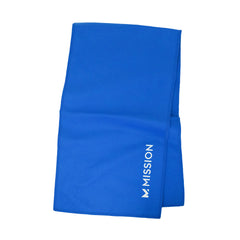
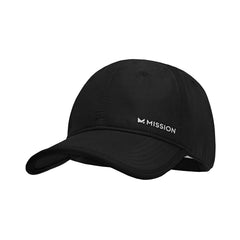
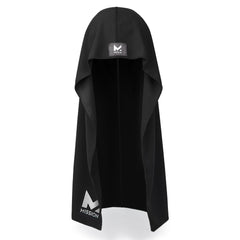
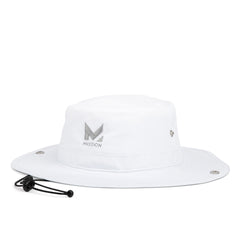
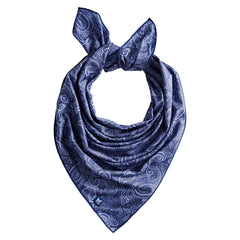
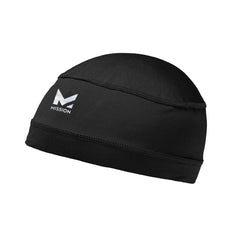

Leave a comment